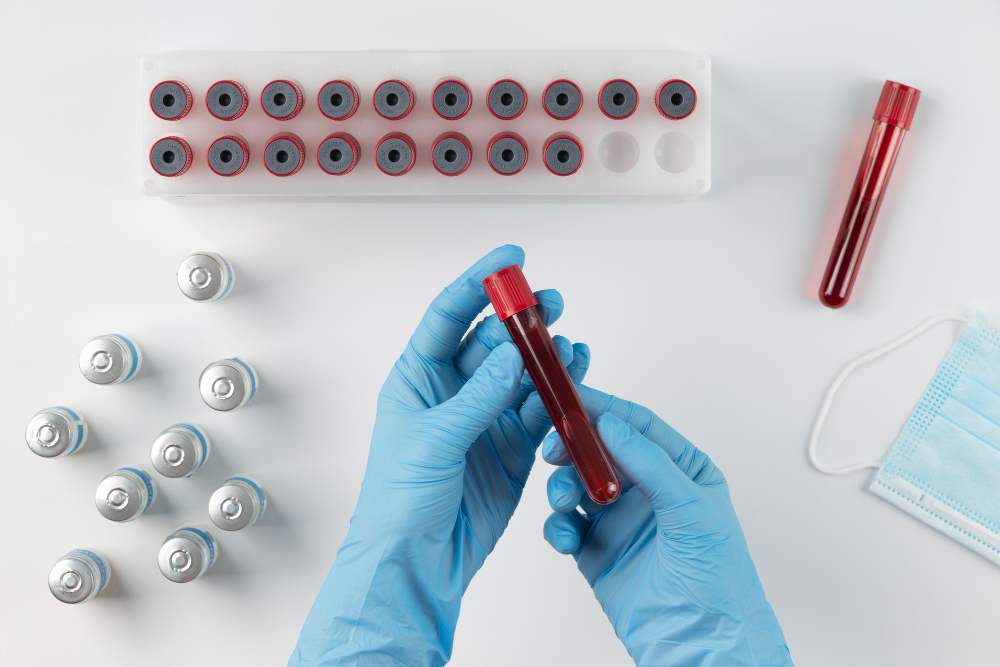Alzheimer’s disease doesn’t start with memory loss. In fact, it often begins 10–20 years before any noticeable cognitive symptoms appear. For decades, the only way to detect early signs was through expensive brain scans or invasive spinal taps. But now, science is catching up—thanks to revolutionary new blood tests.
These tests are helping us detect Alzheimer’s-related changes before symptoms begin. And from a functional medicine perspective, that’s a game-changer.
Why Early Detection Matters
Alzheimer’s is a progressive neurodegenerative disease. By the time forgetfulness or confusion becomes noticeable, damage has already occurred at the cellular level. But if we can catch these changes early, we can intervene—with nutrition, lifestyle, and brain-targeted support—to slow or even halt disease progression. That’s where these cutting-edge biomarkers come in.
1. Phospho-tau 181 and 217: Early Warning Signals
Phosphorylated tau proteins (p-tau 181 and 217) are among the earliest markers of Alzheimer’s disease. When tau becomes tangled in the brain, it interferes with communication between neurons. Elevated levels of p-tau in the blood can indicate this buildup—years before memory problems develop.
Tracking tau levels allows us to begin anti-inflammatory, detoxification, and mitochondrial support protocols before symptoms begin. These interventions can protect neurons and promote resilience.
2. Amyloid Beta 42/40 Ratio: Spotting Plaque Formation
Amyloid beta is a protein that, in healthy brains, is efficiently cleared. But in Alzheimer’s, it builds up, forming plaques that disrupt brain function. A low Aβ 42/40 ratio signals poor clearance and early plaque development.
We help patients improve amyloid clearance through sleep optimization, autophagy-boosting fasting protocols, and detox pathways that support glymphatic drainage.
3. Neurofilament Light Chain (NfL): Measuring Nerve Damage
NfL is a structural protein released when neurons are damaged. Elevated levels are associated with various neurodegenerative conditions, including Alzheimer’s and Parkinson’s.
By addressing underlying drivers like oxidative stress, chronic infections, and nutrient deficiencies, we can slow or even reverse nerve damage progression.
4. GFAP (Glial Fibrillary Acidic Protein): A Window into Brain Inflammation
GFAP is produced by astrocytes—immune cells in the brain—when inflammation is present. High GFAP levels may appear even before tau or amyloid changes, making it a leading-edge marker of brain stress.
Chronic inflammation is a root cause of cognitive decline. Through personalized anti-inflammatory protocols, gut-brain axis repair, and stress reduction, we can calm the brain’s immune response.
Putting It All Together: A Functional Medicine Approach to Prevention
At Resolve Medical, we use these biomarkers as part of a proactive brain health strategy. We don’t wait for symptoms. We act early—supporting neuroplasticity, reducing inflammation, and optimizing cellular function with precision lab testing and individualized care.
These blood tests are available now. And they’re changing lives.
Take the First Step Toward a Healthier Brain
If you have a family history of dementia, feel like your focus isn’t what it used to be, or simply want to be proactive—this is your opportunity.
Schedule a free 15-minute discovery call with Dr. Noorda to explore whether early detection testing is right for you.
Click the “Free Discovery Call” button in the menu bar or send us a message via the chat in the bottom right corner of this screen.
Your future brain health starts with what you do today.



